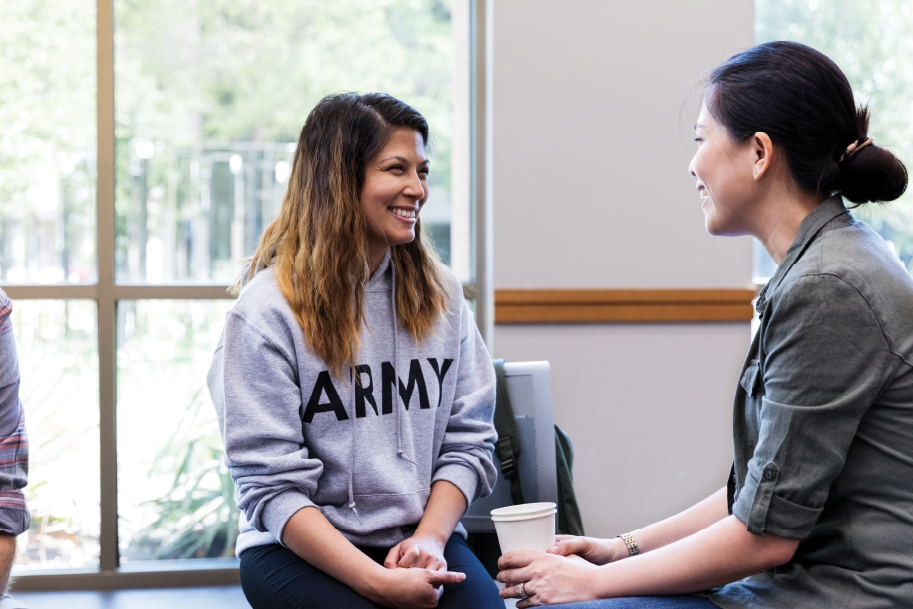What is the VR&E program, and why should you care? G.I. Jobs is here to tell you everything you need to know about VR&E benefits. You might be eligible for VR&E benefits and not even know it. Read on to find out.
You may not be familiar with the Veteran Readiness and Employment (VR&E) program because it used to be called Vocational Rehabilitation and Employment. The US Department of Veterans Affairs (VA) rebranded the program two years ago, giving it a name that better reflects what it really does: helps veterans with service-connected disabilities find meaningful civilian careers.
Veterans and service members are eligible if they did not receive a dishonorable discharge and have a service-connected disability of at least 10%.
Q & A with The VA About VR&E Benefits
We asked Nick Pamperin, who took over in August 2021 as executive director of VR&E, to tell us about the program. Pamperin was generous with his time in talking about a program he’s passionate about. Here are excerpts from his interview. You can listen to the full interview in the digital version of the February issue of G.I. Jobs on the G.I. Jobs app!
Can you tell us… what is the Veteran Readiness and Employment program?
Sure. Veteran Readiness and Employment, we call it VR&E, provides benefits and services to veterans and active duty—if they’re in the process of getting a medical discharge—who are unable to secure suitable employment due to their service-connected disabilities.
So what are VR&E benefits?
VR&E provides an individualized and comprehensive employment plan based upon a veteran’s goals and objectives to allow them to secure suitable employment. So they work with a rehabilitative certified counselor—that’s a master’s level trained expert—to define their career goals, whether that’s long-term services or a short-term certification program, define their scope and objectives, and sign a plan between the veteran and the VA and the counselor to allow them to achieve that end goal of suitable living and suitable employment. As part of that, the VR&E program will cover books, tuition and a monthly stipend for the veteran, depending on which track they go through. There are five tracks of employment within VR&E:
- Reemployment
- Rapid Access to Employment
- Self Employment
- Employment Through Long-Term Services
- Independent Living
How do transitioning veterans or service members typically find out about VR&E benefits?
Over the last two years VR&E has worked extensively to remarket the program. Previously we were called Vocational Rehabilitation and Employment, which I think lended itself to a little misunderstanding about the services that we provide. So we’ve undergone a large-scale marketing effort. We have updated all of our communications on our public-facing websites at va.gov to show that we will pay for graduate degrees, undergraduate degrees, education, to make it a little bit more clear.
So veterans could reach us at va.gov—there’s an entire section just on VR&E benefits.
They can contact us at our toll-free number: 1-800-827-1000.
Or they could reach out to their local regional office, which all are listed on the VR&E page at va.gov. We have VR&E counselors stationed at every regional office throughout the country.
Do service-connected disabilities include mental health? For example, would a veteran who is struggling with PTSD or PTS be eligible for this program?
Absolutely. It’s the entire range of service-connected disabilities, whether that’s mental or physical, and that’s one of the unique portions of the VR&E program is the individual that the veteran is interacting with is a master’s level trained rehabilitative counselor. So they have skills and abilities in dealing with physical and mental disabilities that veterans may have to assist them in gaining suitable employment.
How big is the need for veterans to participate in the VR&E program?
I can tell you this last fiscal year there were over 125,000 veterans that were enrolled within the VR&E program. During the same fiscal year, almost 18,000 of those received a positive outcome, meaning they finished one of the five career tracks.
What can veterans expect from the VR&E program? What’s the future look like for it?
I think when you look at the program growth, it is my hope that with additional outreach folks understand the benefits and value of working with a rehabilitative counselor. Like I said, this is a trained expert who really helps veterans achieve that end goal of suitable employment and independent living.
And it is a service that doesn’t just mean four-year college degrees. We’re currently working on a White House initiative regarding the trucking industry. As we’ve all seen, the logistical supply chain has been severely hampered due to the pandemic. We’ve identified hundreds of veterans who are either in a truck logistic position who could assist, or who have just completed the program. So I think there is immense value from this program.
I receive good news stories every day regarding veterans who were struggling to find suitable employment, and through that engagement with the counselor now have successful careers or are set up for success.
As you’re considering the next steps for your career, stay tuned for monthly G.I. Jobs Hiring Workshops. You’ll hear insider tips from recruiters and veterans to help you get hired. You can watch the workshops on Facebook or LinkedIn. Add the Get Hired Workshop to your calendar.








